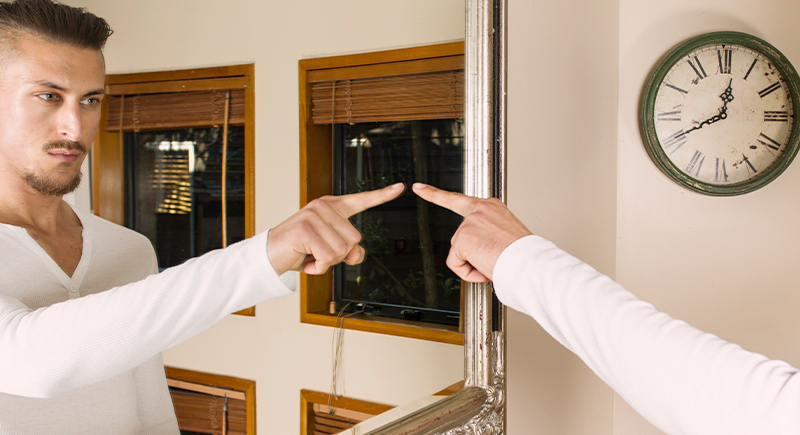This Simple Trick Tells You If a Mirror Is Two-Way
A mirror usually feels like the simplest object in the room until you come across one in a hotel, restroom, or fitting area and feel a twinge of doubt. That reaction isn’t random. Some mirrors are designed to let someone watch unnoticed from the other side. These are called two-way mirrors, and they rely on illumination tricks to hide the transparent side.
Fortunately, spotting them doesn’t require equipment or expertise. With a few careful checks, you can tell the difference between an ordinary mirror and one that’s designed for observation. The most reliable of these tests begins with a fingertip and a closer look.
The Fingernail Test Explained

Image via iStockphoto/Stolk
To check if a mirror is two-way, place your fingertip against the outer layer and observe the image. A standard mirror will show a small gap between your nail and its image because the reflective coating sits beyond a thin layer of glass. If your nail appears to touch its reflection directly, that may suggest the coating lies on the outer surface, which is common in two-way mirrors.
This happens because the front-coated glass layer allows both reflection and partial light transmission. Acrylic and smart mirrors, however, sometimes appear normal when installed backwards, so this test alone cannot confirm what you are seeing. It is an excellent first step, but it should be followed by light or sound checks for more accuracy.
Light Differences Reveal Hidden Spaces
The way two-way mirrors function is by relying on an imbalance in light. The reflective side must stay brighter than the viewing side and allow observers to see through without being seen. Equal lighting cancels this effect and exposes what’s behind. This rule explains why you can often see through a two-way mirror if you shine a flashlight directly at it.
To test this, darken the room and point a flashlight or your phone light at the mirror. If the beam passes through or reveals a dim space on the back of the glass, you may be facing a two-way mirror. Light also exposes inconsistencies around edges or seams, where the transparency becomes more noticeable.
Listening For the Hollow Sound
A quick tap can also tell a lot about a mirror’s setup. When you knock gently on a standard mirror attached directly to a wall, it produces a flat and muted sound. A two-way mirror often gives a hollow or echoing response, which indicates an empty space or observation area behind the glass. This is one of the simplest ways to identify mirrors that are not securely backed.
The sound test helps detect structural differences rather than the reflective surface itself. Mirrors installed into walls, instead of hanging on them, usually create that hollow sound because they are supported by a frame with air space on the opposite side.
While this method cannot guarantee what lies beyond, it may be helpful in providing a useful clue when combined with the fingernail and illumination tests. The more hollow and sharp the echo, the higher the chance that the mirror hides an open cavity or surveillance setup behind it.